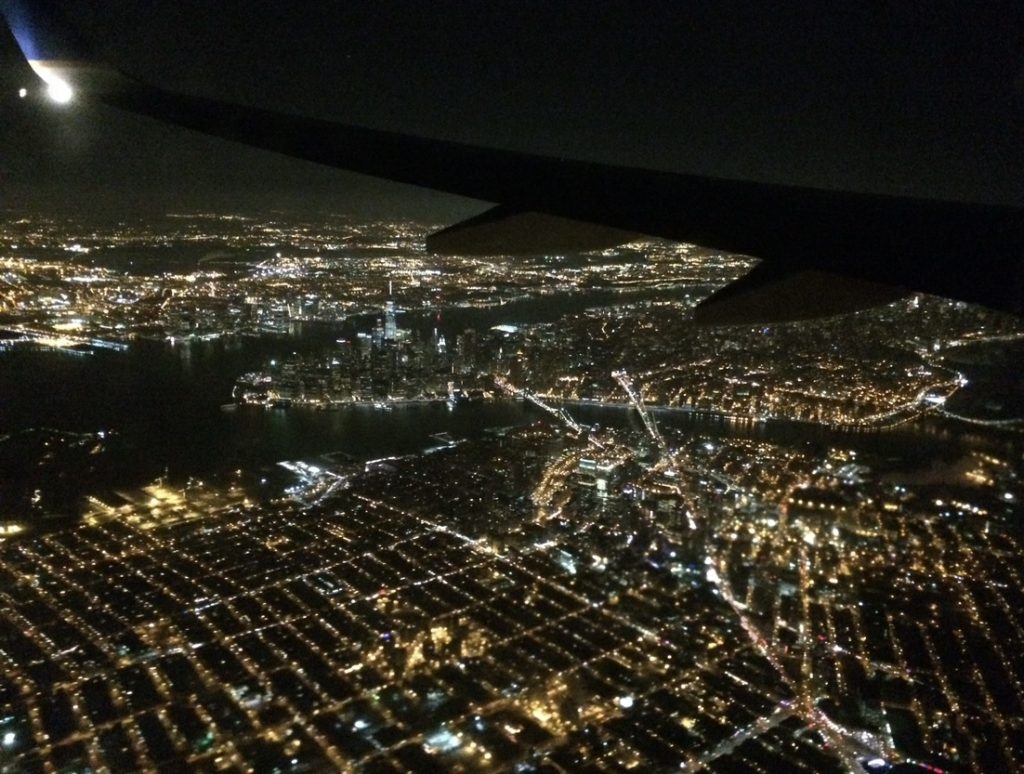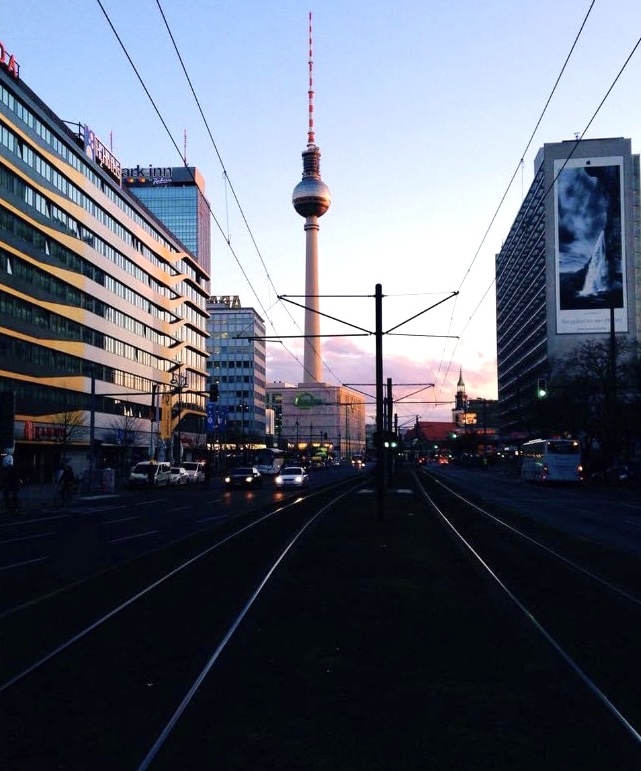
Part One of this series about the roots of my Berlin thriller Hauenstein I described how, aged 24 in the winter of 1984-85 I first encountered Peter Bruegel the Elder’s painting The Triumph of Death (1562) in the library of the Royal College of Art, where I was studying. To see the painting scroll down to Part One of this series, but be prepared for a terrifying experience like that which was a turning point in my life.
During my late teens and twenties I didn’t get on well with my father. However, when I received my MA in cultural history in July 1986, the fact that it was from the Royal College of Art enabled him to show pride in my achievement. However, not long afterwards, he insisted I get „a real job“, as if my studies had been no more than a distraction, so I broke off contact with him. It was a struggle, but the freelance wine journalism I’d begun doing during my time at art school just about kept me above water.
All of this would be irrelevant if, at the beginning of 1987, my father had not been rushed into hospital after falling into a coma. He was wheeled straight from the MRT scan into the operating theatre where a tumor was removed from his brain. That brought him relief, but afterwards no amount of radiation therapy could really help him. In fact, he suffered greatly during those months.
Back in hospital at the end of July 1987 he told me that he took back everything he’d said to me during the preceding years, and we bonded in a way I never thought would be possible. The last time I saw him, during the first days of August 1987, he was in a coma again and his body as cold a block of ice. Each of his shuddering breaths was as painful to hear as the long eerie silence that followed it. Knowing I almost certainly couldn’t be with him at the end, I wrote my name on a scrap of paper and put it under his pillow. The next morning death suddenly became very personal. It was no longer just something that happened to very old people.
I struggled with depression through the remainder of 1987, but during 1988 discovering America helped me pull myself out of the dark labyrinth into which I’d fallen. The last of those trips, to New York City in December 1988, was a totally inspiring experience. I stayed with a friend of a friend who was the wine business called Louis Broman and we instantly became friends. Louis introduced me to New York City and to a bunch of very interesting people who happened to be involved in wine. We also visited a string of exciting bars and restaurants, and one night we went to the movies.
The IFC Center movie theatre on 6th Avenue in Greenwich Village was showing a new movie called Wings of Desire by Wim Wenders. I’d heard the name, but knew almost nothing about it. Louis hated the movie, and in the taxi from the IFC back up 6th Avenue to his place on West 97th Street he railed against it. „A movie isn’t just a series of images, however brilliant!“ he insisted. I vehemently disagreed with him, because the movie, its characters, story and visions of Berlin had captivated me.
I couldn’t have formulated it so clearly then, but Wings of Desire showed me how it’s possible to make a movie about the ancient themes of love and death, fear and longing that’s compellingly original, beautiful and inspiring. For me, doing that involves weaving a thread of impossibility into the complex fabric of reality. That thin line of silver or gold changes everything, though the world otherwise remains our own and completely familiar.
On December 21st, 1988, just a couple of days after I returned to London, the same flight I’d taken to New York – Pan Am 103 – exploded in the air over Lockerbie in Scotland killing all 259 people on board, plus 11 people in Lockerbie itself. I was one of many who narrowly escaped this act of terrorism. The news images of the jagged fragments of the Boeing 747 strewn across the Scottish landscape are well-known. Less widely appreciated is the fact that the bodies of the victims were equally widely strewn, creating a landscape filled with death. Of course, Bruegel’s painting is dominated by red and ochre colors, and Scotland in winter is green, but, undeniably, there’s a certain similarity.
At the beginning of January 1989 I moved to the Mosel Valley in Germany to work as a wine journalist, and to make a new start. Wim Wenders’ film had infected me with a fascination for Berlin. Health problems held me up, but finally in July 1990 I travelled to Berlin with my winemaker friend Ernst Loosen of Weingut Dr. Loosen in Bernkastel. He showed me Berlin in the same way that Louis Broman had introduced me to the substance and soul of NYC. I was instantly in love.

I couldn’t get enough Berlin, not just the contemporary city, but also Berlin’s past. I mean both the official history, and less easily definable things that I absorbed by what I call psychic osmosis. For me, many places in the city have multiple realities of which those things that are clearly visible is only one. I never felt like that about a city before, so it was inevitable I would move to Berlin. Once again, it took some time, but I finally got there in late 1993.
By April 1995 I felt very much at home in Berlin. Then, I opened the new issue of Wine Spectator Magazine (my most important employer) and in the news section found a brief obituary for Louis Broman. It felt as if the world had cleaved in two: before and after. Louis had broken off contact with me and many other people after becoming sick. One of my other NYC contacts thought it was cancer, but it turned out to be AIDS, which was still a big killer.
I was a successful wine journalist, but looking back nearly everything I wrote during the 1990s lacked emotional depth. Let’s face it, that’s something difficult to achieve when your subject is a bottle of wine! Then, in 1999 the filmmaker Thomas Struck asked me to be part of a very unusual documentary he was shooting in the Mosel Valley called Ein Weinjahr, or a wine year. It definitely has emotional depth!
In the theatre group at my high school, I’d worked my way up from the smallest speaking part to the male lead, and more recently I’d had no trouble being interviewed in German in front of TV cameras. However, when we started work on the Mosel I struggled badly in front of Thomas’s camera. Sensing his frustration, I redoubled my efforts, and as work on the film progressed my performance improved considerably.
Perhaps because I was distracted with my struggle to give a convincing performance there’s a massive gap in my memory at this point. Therefore, I can only say that during one of our shooting trips in the Mosel that Thomas told me about a character he’d created some years previously. Although Hauenstein is extremely old he only looks a fraction of his actual age. Somehow death didn’t touch him, although its army of shadows must have repeatedly been around him. More on this later.
I remember being totally fascinated with Hauenstein, turning him over and over in my mind. In June 2000 in Vienna I became convinced that he had to simultaneously be a totally contemporary person and the embodiment of an ancient city’s history. When I got back to Berlin it was immediately clear to me that my new home city was the perfect fit.
At the end of 2000 I started making notes for a Hauenstein story of some complexity as the basis for a movie. At the time I wasn’t aware how significant this step was, but now it is clear to me that all the basic elements of my thriller series had already come together: Berlin (location), Hauenstein (protagonist) and the conviction that it must possible to tell a compelling contemporary story about love and death, fear and longing (the ethos of the story). It was a serious beginning, but how serious was I about it really?
